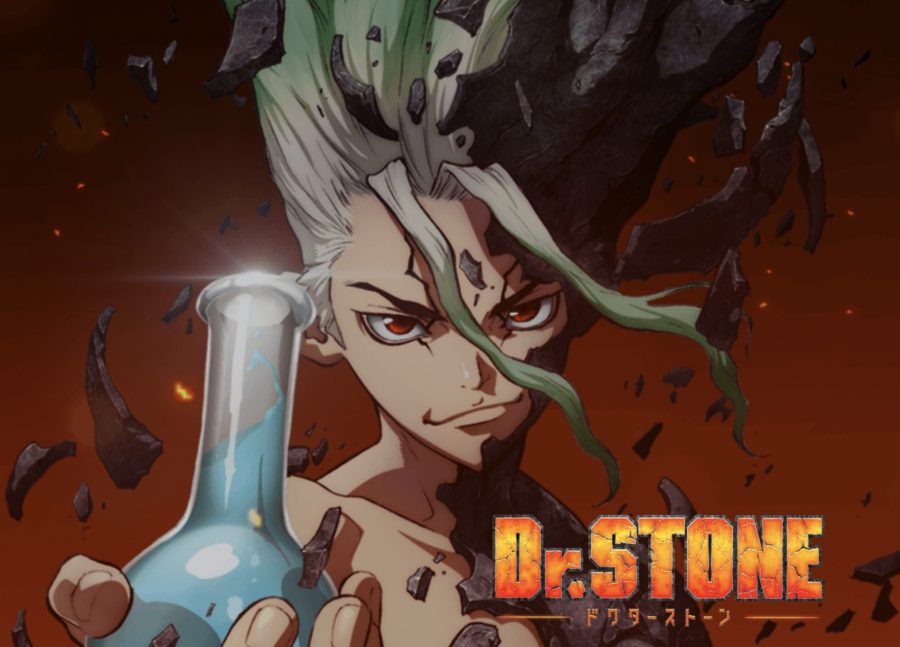3,689 years and 159 days after the entire world’s population was mysteriously turned into stone, Senku Ishigami awakens — and he’s been counting. Luckily for the world, Senku possesses an almost incomprehensible intelligence and knowledge of science and is probably society’s best bet for re-realizing civilization. He quickly figures out the formula to awaken other petrified citizens and applies it to his best friend Taiju, whose boundless stamina is repurposed by Senku for science. Together, they start rebuilding civilization, Senku as the brains and Taiju as the brawn.
Dr. Stone’s main characters are certainly overblown, possessing stamina and intelligence to an inhuman extent, but that’s a necessary suspension of disbelief for the show to work. The main cast is closely tied to what they seek to achieve. Senku is the embodiment of civilization and science, while the antagonist signifies simple, strength-based society. These externalizing characterizations means the death of one of these characters would likely hit harder on an ideological level than emotional. If Senku were to die, the future of humanity would be in peril.
The main conflict of Dr. Stone is a result of these overpowered levels of intelligence and pure strength. Is recreating modern civilization what’s best, or is a civilization shielded from the destructive potential of science better? The show raises the question and then sidelines it but that makes sense: there would be no weight to the answer while the world is still in the Stone Age. There needs to be time for science to run its course to modernity, for the inevitable highs and lows of technology to manifest, and the writers realize that.
There’s certainly much to look forward to, but the question is if the show keeps enough interest to carry its viewers to that point. As mentioned, the main conflict of the show is pushed to the side relatively early on, but Dr. Stone keeps the pace going by introducing a secondary cast of characters, citizens of a small Stone Age society which has presumably been functioning for a few generations. This new community has a great deal of personality and Senku shines here as a tool to introduce science to people who still believe it to be witchcraft. None of the episodes feel like filler because there is always some sort of advancement being made by Senku, whether in the form of personal growth or simply an era-defining invention. Ultimately, the show’s a win-win. The sidelined main conflict promises to be interesting and until the show gets there, the constant sense of motion captures interest in a way many anime struggle to do.
A version of this article appears in the Monday, Sept. 16, 2019 print edition. Email Nicholas Weid at [email protected].























































































































































